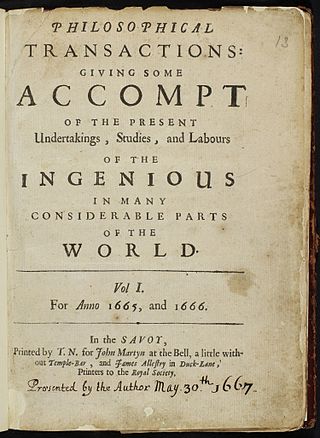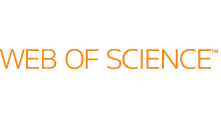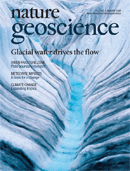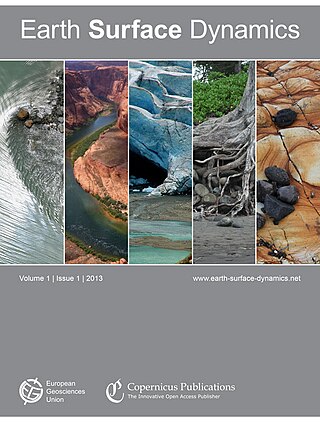
A citation is a reference to a source. More precisely, a citation is an abbreviated alphanumeric expression embedded in the body of an intellectual work that denotes an entry in the bibliographic references section of the work for the purpose of acknowledging the relevance of the works of others to the topic of discussion at the spot where the citation appears.

Scientific literature encompasses a vast body of academic papers that spans various disciplines within the natural and social sciences. It primarily consists of academic papers that present original empirical research and theoretical contributions. These papers serve as essential sources of knowledge and are commonly referred to simply as "the literature" within specific research fields.

A citation index is a kind of bibliographic index, an index of citations between publications, allowing the user to easily establish which later documents cite which earlier documents. A form of citation index is first found in 12th-century Hebrew religious literature. Legal citation indexes are found in the 18th century and were made popular by citators such as Shepard's Citations (1873). In 1961, Eugene Garfield's Institute for Scientific Information (ISI) introduced the first citation index for papers published in academic journals, first the Science Citation Index (SCI), and later the Social Sciences Citation Index (SSCI) and the Arts and Humanities Citation Index (AHCI). American Chemical Society converted its printed Chemical Abstract Service into internet-accessible SciFinder in 2008. The first automated citation indexing was done by CiteSeer in 1997 and was patented. Other sources for such data include Google Scholar, Microsoft Academic, Elsevier's Scopus, and the National Institutes of Health's iCite.
The Institute for Scientific Information (ISI) was an academic publishing service, founded by Eugene Garfield in Philadelphia in 1956. ISI offered scientometric and bibliographic database services. Its specialty was citation indexing and analysis, a field pioneered by Garfield.
The impact factor (IF) or journal impact factor (JIF) of an academic journal is a scientometric index calculated by Clarivate that reflects the yearly mean number of citations of articles published in the last two years in a given journal, as indexed by Clarivate's Web of Science.
The h-index is an author-level metric that measures both the productivity and citation impact of the publications, initially used for an individual scientist or scholar. The h-index correlates with success indicators such as winning the Nobel Prize, being accepted for research fellowships and holding positions at top universities. The index is based on the set of the scientist's most cited papers and the number of citations that they have received in other publications. The index has more recently been applied to the productivity and impact of a scholarly journal as well as a group of scientists, such as a department or university or country. The index was suggested in 2005 by Jorge E. Hirsch, a physicist at UC San Diego, as a tool for determining theoretical physicists' relative quality and is sometimes called the Hirsch index or Hirsch number.

Geophysical Research Letters is a biweekly peer-reviewed scientific journal of geoscience published by the American Geophysical Union that was established in 1974. The editor-in-chief is Harihar Rajaram.

The Social Sciences Citation Index (SSCI) is a commercial citation index product of Clarivate Analytics. It was originally developed by the Institute for Scientific Information from the Science Citation Index. The Social Sciences Citation Index is a multidisciplinary index which indexes over 3,400 journals across 58 social science disciplines – 1985 to present, and it has 122 million cited references – 1900 to present. It also includes a range of 3,500 selected items from some of the world's finest scientific and technical journals. It has a range of useful search functions such as 'cited reference searching', searching by author, subject, or title. Whilst the Social Sciences Citation Index provides extensive support in bibliographic analytics and research, a number of academic scholars have expressed criticisms relating to ideological bias and its English-dominant publishing nature.

Nova Science Publishers is an academic publisher of books, encyclopedias, handbooks, e-books and journals, based in Hauppauge, New York. It was founded in 1985. Nova is included in Book Citation Index and scopus-indexed. A prolific publisher of books, Nova has received criticism from librarians for not always subjecting its publications to academic peer review and for republishing public domain book chapters and freely-accessible government publications at high prices.
Cambridge Scientific Abstracts was a division of Cambridge Information Group and provider of online databases, based in Bethesda, Maryland, before merging with ProQuest of Ann Arbor, Michigan, in 2007. CSA hosted databases of abstracts and developed taxonomic indexing of scholarly articles. These databases were hosted on the CSA Illumina platform and were available alongside add-on products like CSA Illustrata. The company produced numerous bibliographic databases in different fields of the arts and humanities, natural and social sciences, and technology. Thus, coverage included materials science, environmental sciences and pollution management, biological sciences, aquatic sciences and fisheries, biotechnology, engineering, computer science, sociology, linguistics, and other areas.

The Web of Science is a paid-access platform that provides access to multiple databases that provide reference and citation data from academic journals, conference proceedings, and other documents in various academic disciplines.

Nature Geoscience is a monthly peer-reviewed scientific journal published by the Nature Publishing Group. The Chief Editor is Tamara Goldin, who took over from Heike Langenberg in February 2020. It was established in January 2008.
Today in China, there are more than 8,000 academic journals, of which more than 4,600 can be considered scientific. About 1,400 cover health science. In 2022, it was reported that China has become one of the top countries in the world in both scientific research output, and also for highly cited academic papers.
GeoArabia is a quarterly peer-reviewed scientific journal covering petroleum geoscience studies in the Middle East. It is published in Bahrain by Gulf PetroLink and was established in 1996. Publications in GeoArabia cover various aspects of geoscience including sedimentology, tectonics, geophysics and petroleum reservoir characterisation.
The Australian Journal of Earth Sciences, subtitled An International Geoscience Journal of the Geological Society of Australia, is a peer-reviewed scientific journal that is published eight times per year by Taylor & Francis on behalf of the Geological Society of Australia. The journal broadly covers the earth sciences.

Atlantic Geology is a peer-reviewed scientific journal covering the geology of Atlantic Canada and related areas. It is the only regional geology journal in Canada and publishes papers, notes and discussions on original research, and review papers. It was established in 1965 and since 1986 has been published by the Atlantic Geoscience Society with digital publishing assistance from the University of New Brunswick. The journal was one of the first all-digital publications in Canada.

Earth Surface Dynamics is a peer-reviewed open access scientific journal published by Copernicus Publications on behalf of the European Geosciences Union. It covers Earth-surface processes, including geomorphology, whether physical, chemical, or biological. The editor-in-chief is Tom Coulthard. As of 18 June 2015, it has been accepted by Thompson-Reuters to be indexed in the Science Citation Index Expanded, the Journal Citation Reports, and Current Contents/Physical Chemical and Earth Sciences.
The South African Journal of Geology is a quarterly peer-reviewed scientific journal published by the Geological Society of South Africa that was established in March 1896 as the Transactions of the Geological Society of South Africa, obtaining its current title in 1987. Incorporated into the volumes up to and including volume 73 (1970) were the Proceedings of the Geological Society of South Africa. The journal publishes scientific papers, notes, stratigraphic descriptions, and discussions in the broadly defined fields of geoscience that are related directly or indirectly to the geology of Africa. Contributions relevant to former supercontinents such as Gondwana and Pangaea are also published as are topical studies on any geology-related discipline. The journal is abstracted and indexed in the Science Citation Index, Current Contents, GeoRef, Scopus, GEOBASE, and Academic Search.
CRIStin is the national research information system of Norway, and is owned by the Royal Ministry of Education and Research. CRIStin documents all scholarly publications by Norwegian researchers, and complements the BIBSYS database, which focuses on storage and retrieval of data pertaining to research, teaching and learning – historically metadata related to library resources. CRIStin is the first database of its kind worldwide.
The Vadose Zone Journal is a peer-reviewed scientific journal established in 2002 and published by John Wiley & Sons on behalf of the Soil Science Society of America. It covers research on the vadose zone from across a wide range of disciplines. Since 2018, the journal is published open access.









